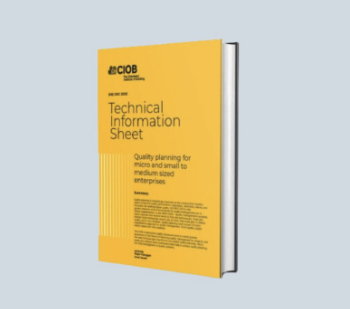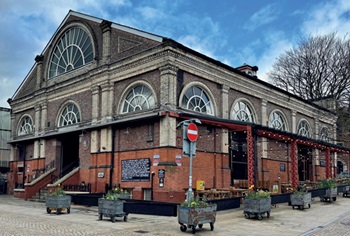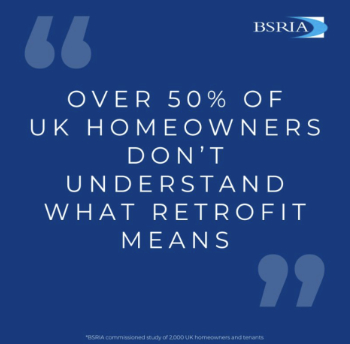How to cut down on material costs on the construction site
Contents |
Introduction
One of the greatest problems that most contractors face is the question – how to save money on materials without harming the quality of the end product? This is particularly important in the construction industry, due to the fact that any 'compromise' you make, may put lives at stake.
Nevertheless, cutting down on material costs on the construction site in a safe and efficient way is quite possible, as long as you do it the right way around. Here are four tips that might come in handy.
Go for local materials
Transportation price of a large quantity of material is something you can’t afford to ignore, therefore, you need to ensure that you go for local materials. It’s not just about the cost of gas on default, seeing as how an overloaded truck (or any vehicle in general) tends to spend more gas to traverse the same distance.
Furthermore, the greater the distance it passes while overburdened, the more often will it break down. In other words, going for local materials saves you money in more than several ways. One last thing, by going down this path, you’ll lower the environmental impact of your construction site, which is one more thing worth keeping in mind.
Standardise
The next thing you can do is standardise the materials you use. This may be a bit in contrast with the idea of going for local materials, yet, it saves time, money and effort in the long run. First of all, by having your team accustomed to working with these materials and having your tools adjusted to them, you’ll have a much more efficient work process than you otherwise would.
Most importantly, this efficient work also implies less adjustment downtime and less material waste due to mismanagement. Needless to say, this is a factor that’s hard to quantify, due to the fact that different batches of the same supply might be of a different quality. Therefore, a human error might not be the only factor worth considering. Nonetheless, it’s more than clear that this leads to a direct material benefit of the contractor.
Purchase materials from specialised suppliers
Another rule you’d do well to adhere to is the idea of buying materials from specialised suppliers. Why? Well, apart from the fact that they have a wider variety of supplies, they also tend to provide specialised offers that general suppliers usually can’t match; for instance, when looking for lead products and supplies, you should look for specialised suppliers that have lead for sale in Australia, New Zealand, or any other country where your construction project is taking place.
Same goes for every different type of material, no matter how exhausting such a process might seem. Once you establish these connections, you’ll have a much easier job of automating the rest of the process.
Buy bulk and save
Buying in bulk is always more frugal than acquiring the specific amount you need, especially due to the fact that you can never have a 100 percent accurate guess of how much material you will need. You see, not every material (even from the same supplier) is of the same quality, same as your team isn’t always equally diligent. In this way, you’ll also provide your ream with some replacement material without having to undergo an expensive turnover. Sure, this also means that you would have to invest in storage, yet, more often than not, this is an expense worth making.
Conclusion
Neither of the above-listed four tips suggests skimming on materials or purchasing materials of lower quality. All that you have to do is look for simpler, more pragmatic ways to acquire necessary materials, as well as plan for the long run. Finally, by including abstract terms of human error probability and the effects of standardisation into the equation, you might get the full picture of the savings that you’re about to make.
Related articles on Designing Buildings Wiki
Featured articles and news
About the 5 Percent Club and its members
The 5% Club; a dynamic movement of employers committed to building and developing the workforce.
New Homes in New Ways at the Building Centre
Accelerating the supply of new homes with MMC.
Quality Planning for Micro and Small to Medium Sized Enterprises
A CIOB Academy Technical Information sheet.
A briefing on fall protection systems for designers
A legal requirement and an ethical must.
CIOB Ireland launches manifesto for 2024 General Election
A vision for a sustainable, high-quality built environment that benefits all members of society.
Local leaders gain new powers to support local high streets
High Street Rental Auctions to be introduced from December.
Infrastructure sector posts second gain for October
With a boost for housebuilder and commercial developer contract awards.
Sustainable construction design teams survey
Shaping the Future of Sustainable Design: Your Voice Matters.
COP29; impacts of construction and updates
Amid criticism, open letters and calls for reform.
The properties of conservation rooflights
Things to consider when choosing the right product.
Adapting to meet changing needs.
London Build: A festival of construction
Co-located with the London Build Fire & Security Expo.
Tasked with locating groups of 10,000 homes with opportunity.
Delivering radical reform in the UK energy market
What are the benefits, barriers and underlying principles.
Information Management Initiative IMI
Building sector-transforming capabilities in emerging technologies.
Recent study of UK households reveals chilling home truths
Poor insulation, EPC knowledge and lack of understanding as to what retrofit might offer.























